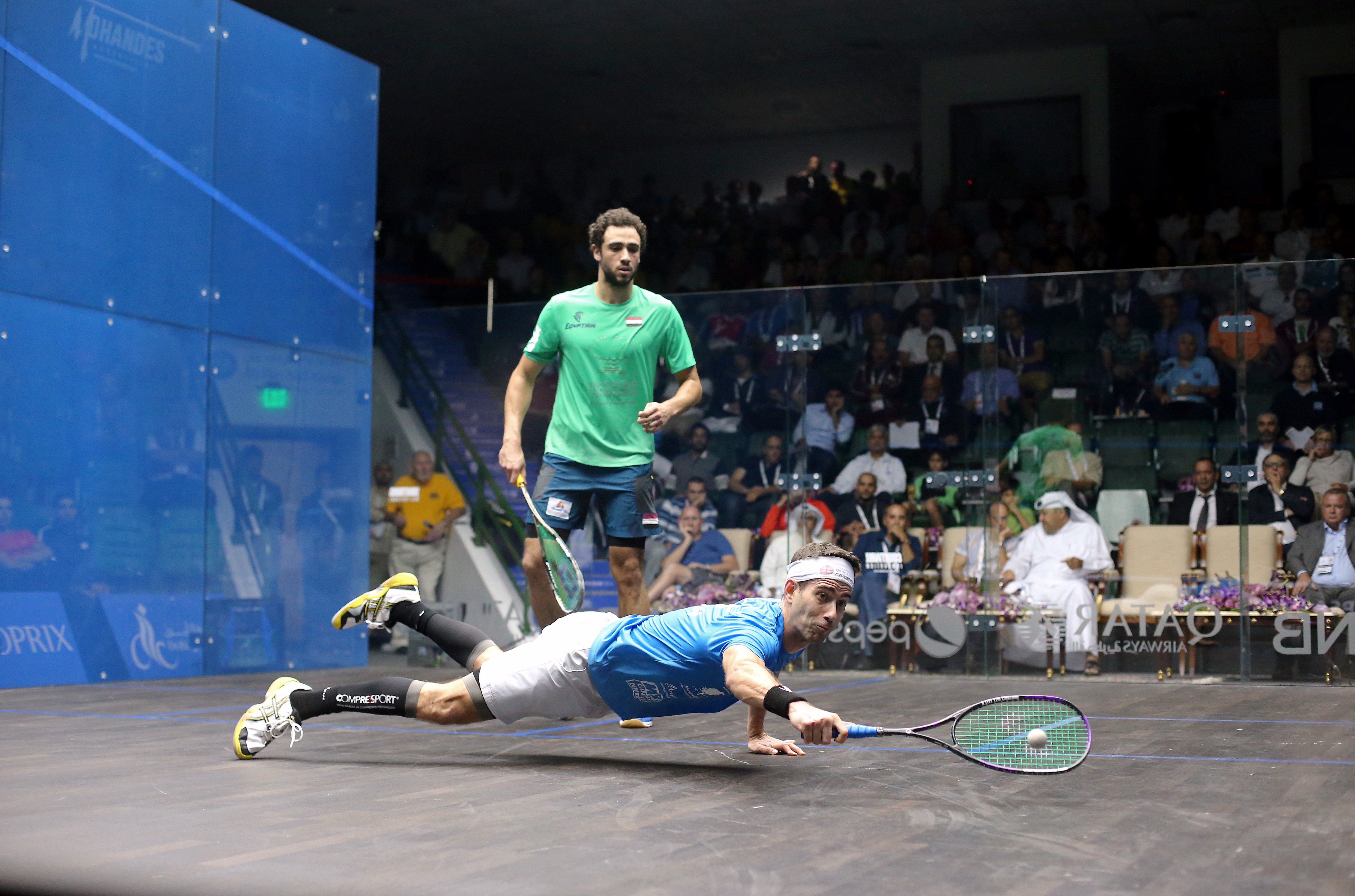By Kim Clearkin, Director of Squash at San Francisco Bay Club
I often hear some of our members commenting on how little the pros seem to move when they play—they don’t seem to run, but instead they glide about the court always managing to retrieve the ball and then, magically, they’re in position to take the next shot too. They always seem balanced and in control when they take their shots. There is no separation of movement and swing, and squash becomes a dance on court—an art form.
First, movement is the process of approaching the ball, arriving where you need to be, in control and balanced, just at the right time to hit the ball where you want it to go; and recovering from that hit to where you need to be to cover your opponent’s options.
Movement is a fundamental aspect of squash and often not focused on at the beginner level. Yet, if you can’t move to the “right” place on the court, it doesn’t matter how perfect your technique is—you won’t be able to use it.
3.0
At the 3.0 level, many players hit the ball, wait for their opponent to take their turn before then running straight to where the ball winds up. They completely overrun the ball, often bouncing off the wall or using the wall to push themselves off on their next rush to strike the ball. These players find themselves unable to stop, to prepare for their shot, control their shot or their body, or use any technique. They are then unable to break this cycle and so they run from point to point during the rally.
You need to understand where to be relative to the ball to strike it using your technique, as well as where you want it to go. Start with solo practice, hitting the ball consecutively in a controlled manner, into the service box, to reinforce the spacing required to control the ball. Once the spacing is understood you can then work on understanding how to move to the right place—in control. Ghosting can be very effective for this if used seriously. By moving to a stationary, imaginary ball, and pretending to hit it where you want it to go time and time again, you will learn and form good habits.
4.0
At the 4.0 level, players understand the basic squash movements and shot techniques, but they are generally a little mechanical in their application. Players need to work on linking their swing to their movement which will result in more fluidity in their play.
The key is thinking ahead. Choose shots that will allow you to be where you need to be next, using your follow through to help move into position. Time your movement to the pace of the ball so that you get to the “T zone” as your opponent hits the ball. But don’t be stationary at the T; it is much harder to start moving from a stationary position than from a moving one.
Continue to use ghosting to help work out your steps to the ball and your balance, thinking specifically about how your swing links to your movement. Solo drills such as boast/cross-court, where you have to hit your own shots will help you improve fluency of movement. One conditioned game, with a partner, that is helpful is the “mini squash” game—players hit only above the service line but before the short line. This forces players to choose shots that they can move away from to allow their opponents to get to the ball.
5.0
5.0 Players know how to move around the court—at their pace they can look almost as good as the pros. These players need to work on their explosion to and from the ball. You will often see players at this level using a jump rope and plyometrics linked to ghosting to help develop this skill. This quick first movement will allow them to move to and from the ball “effortlessly,” hence the “gliding” motion mentioned at the beginning.
Watch the ball and your opponent so that you can read the play. Use your “recovery time” to pressure your opponent and move to a position that covers their options. The key is to focus on moving to a place on the court that covers your opponent’s options, or moving quickly onto the ball to give yourself options.
Players at the 5.0 level have fast reaction times, along with great explosion onto, and off of, the ball. They move to the ball fast for deception, and they move off the ball fast to limit their opponents’ choices. But in between you may well see them meandering to the T.





